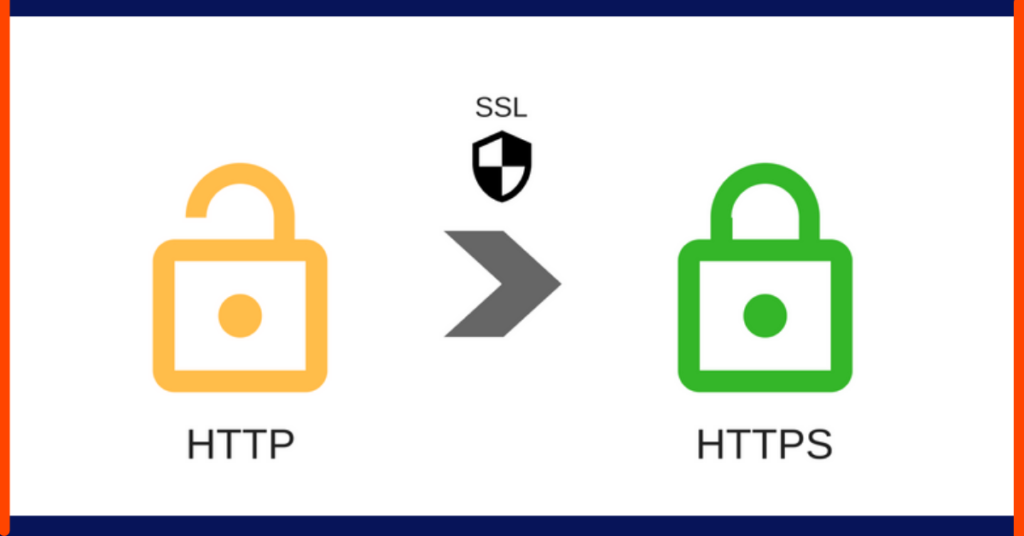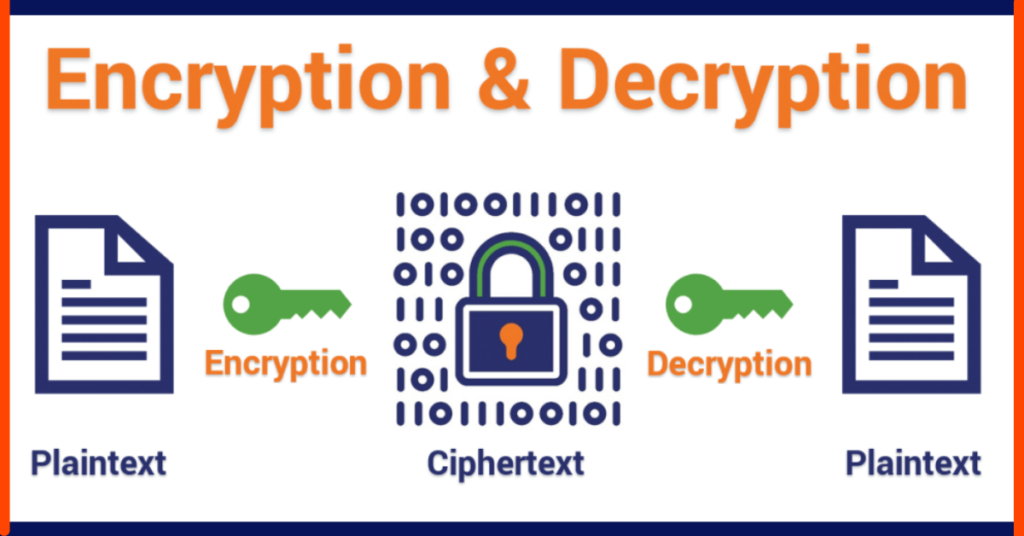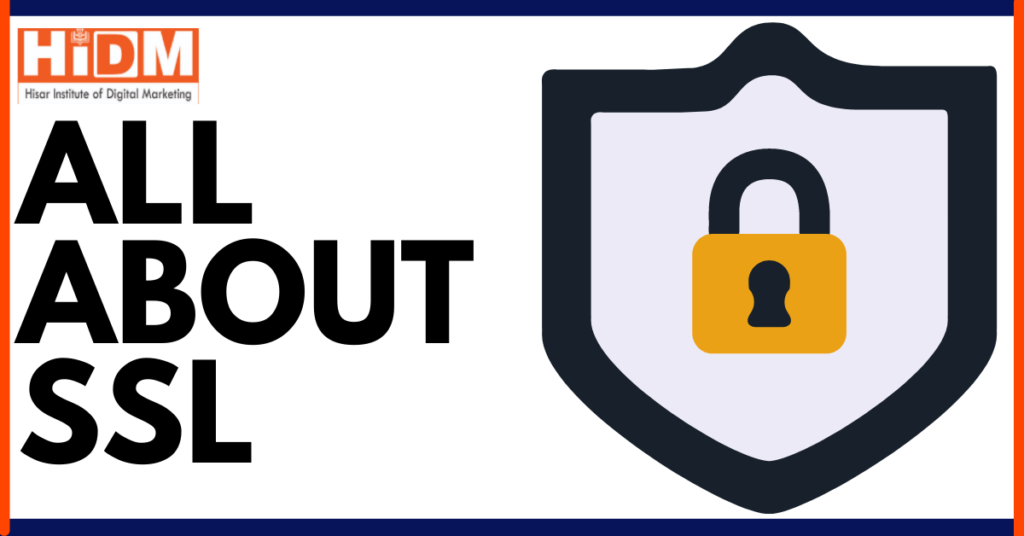Digital marketing is a marketing approach that majorly relies on the internet to connect with the targeted audience through various digital channels and platforms. In leading digital marketing a marketer might purchase a website, write blogs, and use social media and another channel to reach customers.
A website is a combination of two words web means global and site means where activity is taking place. For making a website we need a domain name and web hosting, without these components, we can’t make a website.
For doing any work on the internet, we need a name which is known as the domain name. A Domain name refers to the name of the website. It helps the user to identify the website easily. It is a kind of human-readable IP address.
Web hosting provides you the storage space which you need for your website. Because every business has some data in the form of text, image, audio, or video.
What is SSL?
To secure your website, you need SSL (secure socket layer). It is a kind of security protocol that encrypts the data being sent between server and user.
It was first evolved by Netscape in 1995 for the purpose of ensuring privacy, data integrity in Internet communications, and authentication. SSL is the precursor to the modern TLS (Transport Layer Security) encryption used today.
Transport Layer Security is the incomer protocol to SSL. TLS is an upgraded version of SSL. It works in the same way as the SSL, using encryption to protect the transfer of data and information.
SSL prevents cybercriminals from reading and modifying any transferred information, which also includes potential personal details.
A website that implements SSL has “HTTPS” in its URL instead of “HTTP.”
HTTP (Hypertext Transfer Protocol)
HTTP is Hypertext Transfer Protocol. HTTP offers a set of rules and standards which govern how any information can be transfer on the World Wide Web. HTTP issues standard rules for web browsers & servers to communicate.
HTTPS (Hypertext Transfer Protocol Secure)
Hypertext Transfer Protocol Secure is the secure form of HTTP. This protocol allows secure communication between a client (e.g. web browser) and a server (e.g. web server) by using encryption. HTTPS use predecessor Secure Sockets Layer (SSL) for encryption

What is Encryption & Decryption?
Encryption means converting normal text into meaningless text. It is a process that is done at the sender’s end. It’s important to work is to convert plain text to ciphertext. Any text can be encrypted by the secret key or public key.
Decryption means converting meaningless text into original form. It is a process that is done at the receiver’s end. Its main work is to convert ciphertext into plain text. Here the encrypted message can be decrypted by the secret key or public key.

How Does SSL Work?
SSL connection takes place when a web browser tries to access a website powered by SSL; this order is called SSL Handshake. This secured connection made by SSL allows the end-user (e.g., a web browser) and a webserver to authorize secure connections with each other by exchanging the secret keys for encryption and decryption in the communication. This SSL is established instantly and is invisible to the user.
Here are the details of how SSL works:
- When a web browser attempts to visit a website (portal), it first requests the server to identify itself.
- Then, the webserver sends a copy of the SSL certificate with its public key.
- During the SSL procedure, the web browser checks the validity of the SSL certificate.
- SSL certificate is a combination of the public key and private key which handle the procedure of data encryption and decryption during the SSL handshake for the secured communication. When the browser confirms that the certificate is trusted, then a third key is generated by the browser known as ‘session key’ by using the server’s public key.
- After that, the session key is sent back to the server. The session key is like a symmetric key.
- The server decrypts the received session key and sends back the encrypted session key.
- At last, a secure connection is established between the user and the webserver at the end of the handshake. Now, they can communicate in a secure environment with the provided encrypted session key. SSL handshake takes place within a second.
What is an SSL certificate?
SSL certificate is a kind of digital certificate that enables a website to switch HTTP into HTTPS. It ensures that the data transferring between two parties is secure. SSL helps in preventing hackers from stealing information like personal details. SSL is commonly used in e-commerce websites because you have to submit your personal details.
But from 2022, SSL will be a must for each and every website.
Why do we need an SSL certificate?
SSL certificate ensures a secure connection between a user and the website. SSL certificate is major for a website because it shows trust and a secure layer to the customer.
The SSL helps you to secure information like
- Medical records
- Legal documents
- Personal information
- Bank details
- Login credentials
Types of SSL certificates
Website holder purchases a website from CAs (certification authorities). CAs is a trusted organization that manages and issue security certificate and public keys which is used to communicate to the user.
There are different types of SSL certificate which provides you different levels of security. That’s why it is important to understand the type of certificate as it helps you to get the required certificate for your website.
Domain validated: Domain Validated certificate is only verified by the owner of the websites. It consists of a very simple process where CAs will send an email to the website holder for registration. It doesn’t require the company information. But, be aware of the DV certificate because it is the lowest of trust and is commonly used by cybercriminals because of easily obtains and shows the website is secure.
Organizational validated: For OV certificate CAs confirm certain information including organization, location, and its domain name. This process takes a couple of days to get verification. OV certificates have a medium level of trust. But, a good option for a public-facing website because it deals with less sensitive information.
Extended Validation: This certificate is a must for the websites which handle sensitive information. OV certificate has a high level of trust. The review process consists of an examination of corporate documents, confirms the applicant details, and verifies the information with third-party data based. Users can get to know that the website is holding an EV certificate because the URL bar contains a padlock.

Features of SSL Certificate
An SSL Certificate provides different types of features such as security and convenience, Server evidence, Extensibility, and Automatic Client Authentication.
Secure and convenient: SSL creates a secure connection between a client machine and a server on which the website is hosted.
Server evidence: SSL evidences the server to ensure that the client is talking to the correct computer.
Extensibility: SSL can use most encryption algorithms for security.
SSL Tunneling
SSL tunnel involves a client that requires an SSL connection in backend service via a proxy server. This proxy server works as an intermediate between client and server. This proxy server opens the connection between the client and secure server and copies the data from both sides without making interference in the SSL connection.
Working of SSL Tunneling
Step for working of SSL Tunneling from its creation to end is given as follows:
A tunneling request connect is made by the client for HTTPS. This request is sent to the proxy server automatically for the HTTPS request. The connect request is used to establish a tunnel.
• The proxy server receives the tunneling request. Then it connects the secure server destination to the port that is requested by the client.
• The proxy server sends back a response to the client to confirm that an SSL connection is created.
• A SSL handshake occurs effectively between the client and the server as the proxy server plays no part in it.
• After the SSL handshake, the encrypted data is passed from the client to the server via the proxy server. This data is only decrypted by the client or the server and never the proxy server.
•When the closure of the connection is requested by the client or the server, the connections are closed by the proxy server, and normal operations resume.
So, this is all about SSL (secure socket layer). I hope this blog will help you to get knowledge about SSL.

